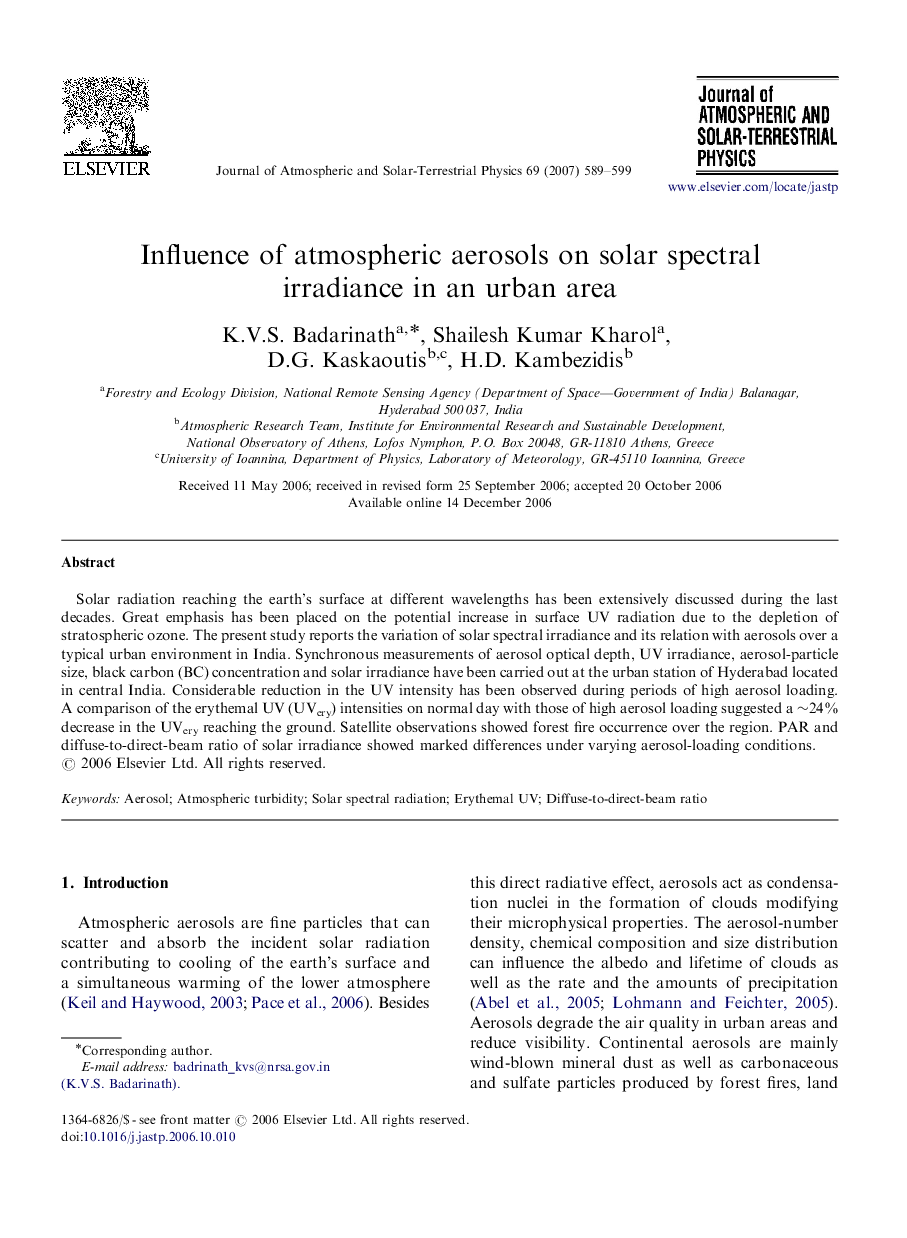| کد مقاله | کد نشریه | سال انتشار | مقاله انگلیسی | نسخه تمام متن |
|---|---|---|---|---|
| 1778043 | 1523680 | 2007 | 11 صفحه PDF | دانلود رایگان |

Solar radiation reaching the earth's surface at different wavelengths has been extensively discussed during the last decades. Great emphasis has been placed on the potential increase in surface UV radiation due to the depletion of stratospheric ozone. The present study reports the variation of solar spectral irradiance and its relation with aerosols over a typical urban environment in India. Synchronous measurements of aerosol optical depth, UV irradiance, aerosol-particle size, black carbon (BC) concentration and solar irradiance have been carried out at the urban station of Hyderabad located in central India. Considerable reduction in the UV intensity has been observed during periods of high aerosol loading. A comparison of the erythemal UV (UVery) intensities on normal day with those of high aerosol loading suggested a ∼24% decrease in the UVery reaching the ground. Satellite observations showed forest fire occurrence over the region. PAR and diffuse-to-direct-beam ratio of solar irradiance showed marked differences under varying aerosol-loading conditions.
Journal: Journal of Atmospheric and Solar-Terrestrial Physics - Volume 69, Issues 4–5, April 2007, Pages 589–599